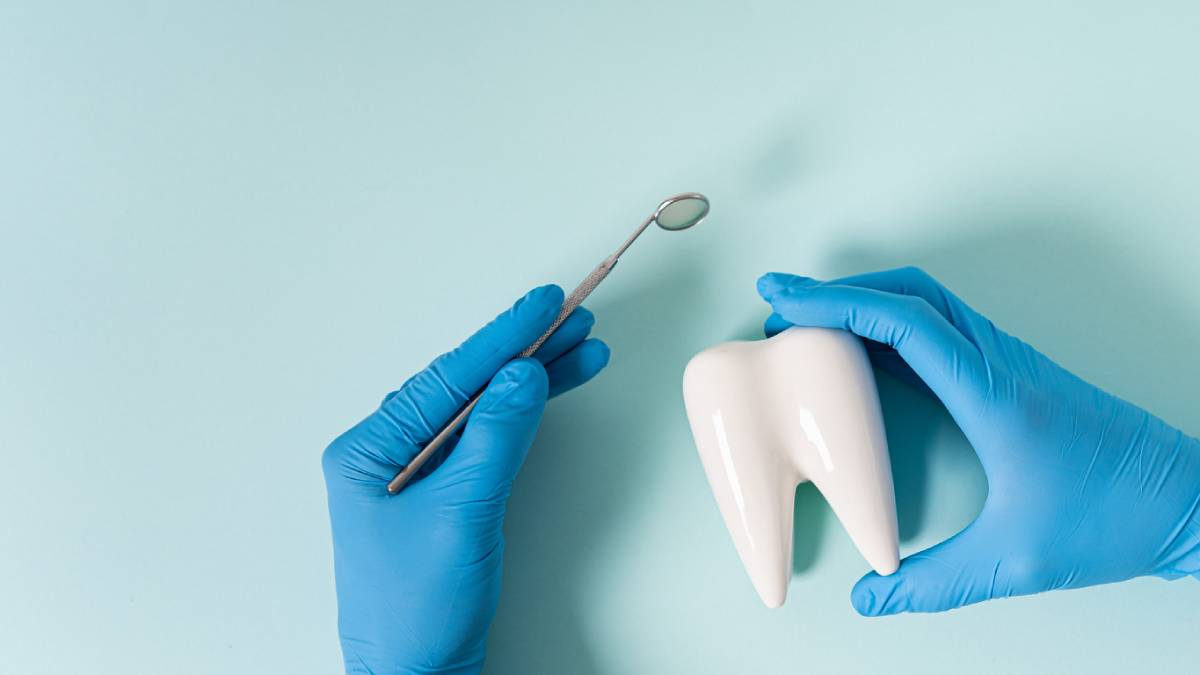Tooth extraction is a surgical procedure of completely removing the tooth from its socket. It may be necessary for several different reasons. If a patient has experienced pain in a damaged or decayed tooth for a long time, taking the tooth out can provide a great relief. Typically, tooth extraction is considered to be a procedure that is not very difficult. However, it is still a surgery that can disrupt the tissues surrounding the tooth.
When Does Bleeding Stop After Tooth Extraction
Some bleeding inevitably occurs right after the procedure, but it is a normal process. However, it is important to follow your dentist’s instructions after the procedure to avoid any complications. Many patients want to know when bleeding stops after tooth extraction. In this article, we will describe what to expect after the procedure.
Why Does Bleeding Occur After Tooth Extraction
Bleeding after tooth extraction is normal and expected. Some patients might experience more bleeding than others. It depends on the difficulty of the surgery and on the health condition of the patient.
After the tooth extraction, you can experience:
Soft tissue bleeding
The surgery will inevitably disrupt some of the soft tissue surrounding the tooth while it is being pulled out. Sometimes, the extraction can be traumatic due to, for example, the difficult position of the tooth. Some blood vessels can get lacerated in the process, leading to stronger bleeding.
Bleeding caused by incisions
Sometimes, it is necessary to make incisions to the gum, depending on the position of the tooth.
The incisions make the extraction easier, but this can lead to more bleeding after the procedure.
When Does Bleeding Typically Stop
An important part of healing after tooth extraction is the formation of a clot in the socket of the removed tooth. Sometimes, this process happens quite quickly, and you can expect the bleeding to stop in several minutes after the procedure. In cases of more complicated tooth extractions, this process can take longer, and the bleeding can continue for a couple of hours.
It is considered normal to have slight oozing from the removed socket for the first 24 hours. However, if the clot is not forming and strong bleeding lasts for more than 8 hours, it is best to consult with your dentist.
Some patients may be worried by the seemingly large amount of blood right after the tooth extraction. However, in many cases, it looks this way because blood mixes with the saliva, and the actual amount of bleeding does not exceed the norm.
After the Tooth Extraction
Typically, after the tooth is removed, your oral surgeon or dentist will put gauze on the place of extraction. The patient should carefully bite down on the gauze so it can absorb excess blood. Biting down on the gauze will also provide the necessary pressure to help the blood clot form. It is recommended to remove the gauze in about three hours after the surgery. But at that time, the clot is typically fully formed, and the bleeding stops.
How to Prevent Bleeding From Reoccurring
Forming of the clot in the socket of the removed tooth is the first necessary step in the healing process. You need to be very careful not to dislodge the clot, as it can lead to excessive bleeding and a slower process of healing. On top of that, if the blood clot is removed, you can experience a condition known as dry socket, which is usually quite painful.
Follow this recommendation to avoid dislodging the blood clot and to have a faster recovery:
- Do not use a straw for drinking. The suction created in the mouth can easily dislodge the clot.
- Eat soft foods. Especially for the first 2 to 3 days, it is important to avoid any hard foods that would require a lot of chewing or biting. The strain can disturb the healing process. Also, make sure not to eat anything like chips, crackers, or popcorn to prevent the little hard pieces of the food from getting stuck or stabbing and irritating the socket.
- Avoid smoking and using tobacco products. Smoking is a very common cause of the clot being dislodged as it also creates suction. In fact, smoking very often causes dry socket. On top of that, tobacco slows down the healing process.
- Maintain good oral hygiene. It is crucial to keep the area clean and to avoid leaving food particles in your mouth to prevent infection.
- Make sure that you brush the surrounding teeth very gently so as not to disturb the wound and the clot inside the socket.
Tooth extraction can cause some pain, bleeding, and discomfort, but these issues soon go away if the extraction is done in the right way. Make an appointment with one of our qualified dentists at Smile Studio to have the extraction or to receive a consultation regarding your case.

